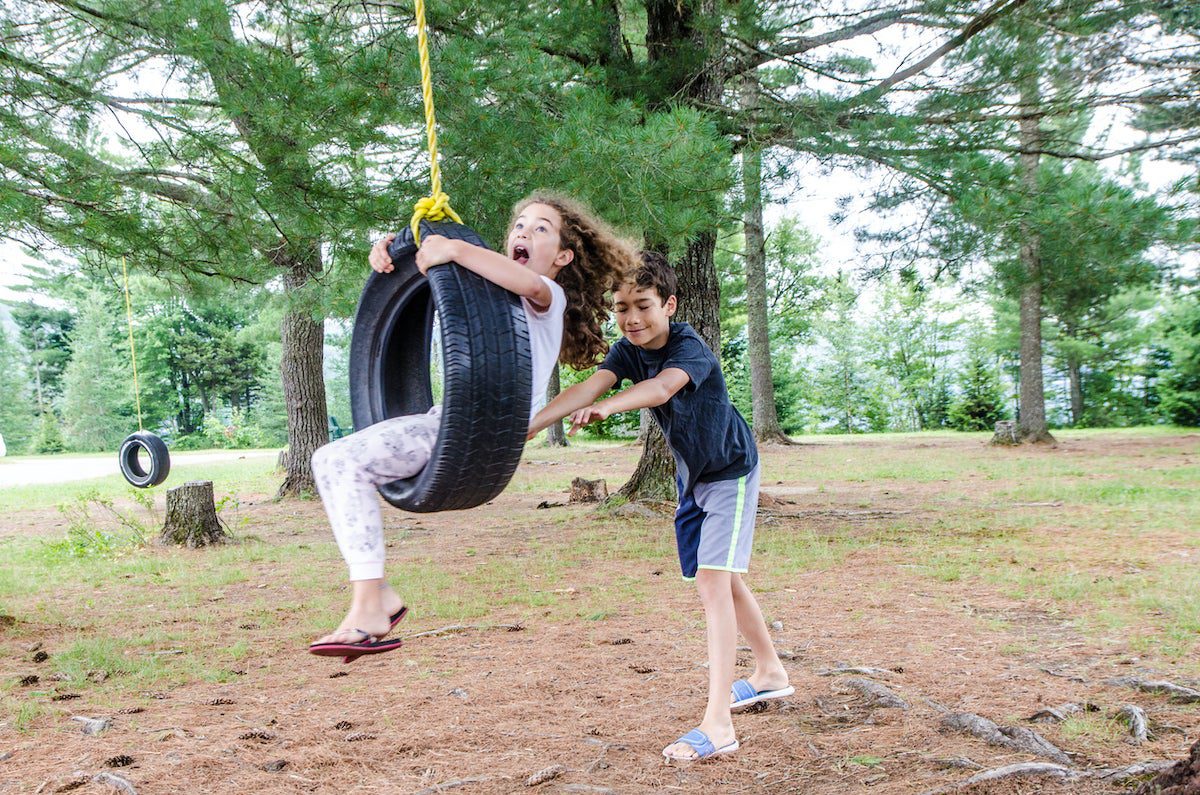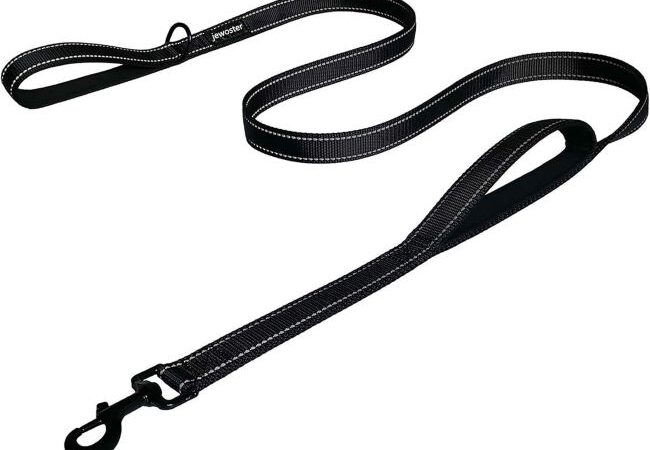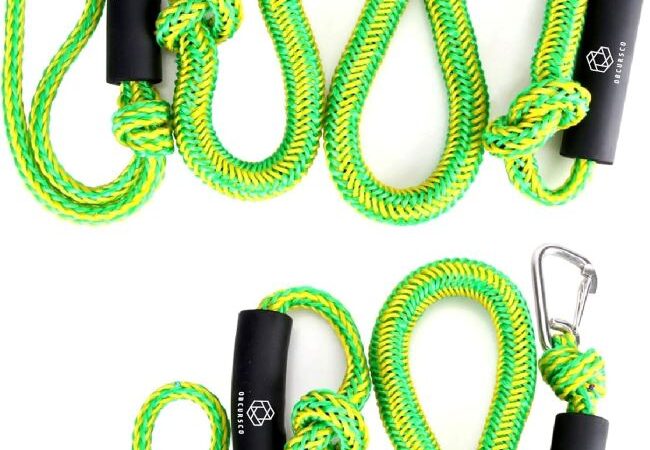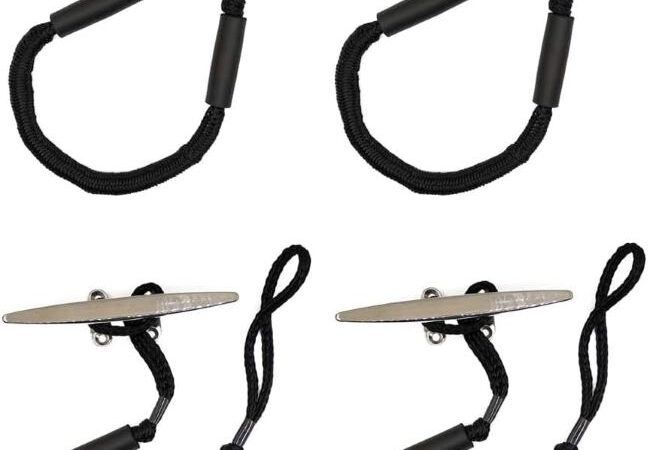
How to Hang a Rope Swing: Simple Steps for Fun!
To hang a rope swing, choose a sturdy branch and use a durable, weather-resistant rope. Securely tie the rope using either a bowline knot or a double running bowline for safety.
Contents at a Glance
ToggleWelcoming a rope swing into your backyard invites laughter and creates memories. Swinging, after all, is not just an activity for children; it’s a timeless pastime that offers a sense of freedom and joy to people of all ages. As we delve into the task of installing this charming addition, remember safety comes first, starting with the selection of the proper tree and the best quality rope.
The tree limb chosen should be strong enough to support the weight, generally at least 8 inches in diameter, and free of signs of disease or decay. Ensuring the rope is weather-resistant guarantees longevity, meaning more sunny days spent soaring through the air. The process may seem daunting, but with the right materials and a clear, concise guide, your backyard will soon feature a delightful swing for everyone to enjoy.
Choosing The Perfect Tree
Assessing the tree’s health and stability is critical before hanging a rope swing. Inspect the tree for any signs of disease or decay, such as mushrooms at the base, trunk cracks, or dead branches. A healthy tree is vital for ensuring safety. Stability relies not just on tree health, but also on the root system; large, established trees are usually more stable.
For evaluating branch strength and height, choose a horizontal branch that is at least 8 inches in diameter and no less than 10 feet from the ground. This ensures that the swing has enough clearance to operate safely and reduces the risk of injury due to low swinging.
Considering the location and surroundings includes making sure the swing has a clear path, away from fences, other trees, or structures. Assessing the potential fall zone ensures that any unintentional fall does not result in an injury from nearby obstacles. Additionally, be mindful of the direction of the sun to avoid direct sunlight in the eyes during use.
Gathering Your Materials
Types of rope suitable for swings typically include braided polyester, manila, and polypropylene. Each material boasts its own strengths and weather resistance, making the selection crucial for the swing’s durability and safety. Polyester rope, for instance, is known for its ability to withstand UV rays and maintain strength over time, while manila offers a traditional look and natural fiber composition.
Concerning the seat material, durable options like hardwood, plastic, or rubber are often recommended. Hardwood, such as oak or maple, provides a sturdy and natural sitting surface, whereas plastic and rubber are more resilient against weather. It’s vital to ensure that the chosen material can support the weight of the users and is comfortable for seating.
For installation, various additional tools and safety gear are needed. A list includes a drill, various drill bits, measuring tape, and potentially a ladder. To guarantee safety during both the installation and usage, consider investing in a high-quality harness, helmet, and gloves. The importance of meticulous measurement and secure knots cannot be overstated in ensuring the swing’s safety and functionality.
Preparing The Swing Site
Clearing the area for safe swinging is vital for ensuring a secure and enjoyable experience. Begin by removing any debris, such as rocks, sticks, or sharp objects, which might pose a risk. Trim overhanging branches or bushes that could obstruct the swing’s path. A cleared radius of at least 10 to 15 feet around the swing ensures ample swinging space and safety for users.
To measure and mark for precise placement, use a measuring tape to determine the optimal length of the rope needed. The exact height will depend on the branch or structure from which the swing will hang. Ensure the markings are level to prevent the swing from tilting to one side when in use.
Regarding environmental considerations, select a sturdy branch that is healthy and strong to minimize impact on the tree. Avoid species that are fragile or endangered. Consider consulting with an arborist to determine the best way to install the swing without causing harm to the tree. Remember to check local regulations that may govern the installation of swings in public or environmentally sensitive areas.
Installing The Swing
Throwing the rope over the selected branch is a critical first step and requires precision. Ensure the rope is untangled and has sufficient length to reach the branch and double back to the ground. Toss one end over the branch, aiming for the center. This helps in distributing the weight evenly when the swing is in use. Test the branch for strength by pulling on the rope before proceeding to the next step.
| Step | Action |
|---|---|
| 1 | Choose a knot that is strong and secure, such as a bowline or a figure-eight follow-through. |
| 2 | Tie the knot at the appropriate height, ensuring it will hold the swing at your desired level. |
| 3 | Double check the knot’s stability before adding any weight to the swing. |
Ensure the seat is attached firmly to the rope to prevent any accidents. If using a wooden plank, drill holes at each end and use heavy-duty rope to secure it. For tire swings, ensure the rope passes through the tire in a secure fashion and is knot-free. Always use weather-resistant materials to prolong the life of your swing. Prior to use, pull on the swing to ensure everything is held tight and ready for enjoyment.
Safety Checks And Testing
Ensuring the safety of your rope swing is paramount. Inspect the rope regularly for signs of wear and tear, focusing on any fraying or weakened sections that may compromise the swing’s integrity. Examine knots closely to confirm they are tight and secure. It is essential that these knots are made correctly and can sustain the weight they will carry.
Prior to allowing anyone to use the swing, conduct tests by incrementally adding weight. Start with a light weight and gradually increase, watching how the rope and knots handle the tension. This step is critical to prevent any accidents caused by rope or knot failure.
- Check the rope’s condition before each use.
- Clean the rope as needed to prevent degradation from environmental elements.
- Trim or re-tie any frayed ends of the rope to maintain strength.
- Replace the rope entirely every few years, or sooner if you detect significant wear.
Fun Enhancements And Ideas
Customizing your rope swing is not only about functionality; it’s also an opportunity to inject a bit of your personality into the design. An eye-catching approach is to use paint or special carvings on the swing’s seat. Selecting durable, weather-resistant paints can turn a plain wooden seat into a colorful backyard feature. Carvings, whether they be your initials, a favorite quote, or an intricate design, add a personal and rustic charm.
Enhancing comfort is essential for extended periods of relaxation on your swing. Adding cushions can provide a softer seat, while covers offer protection against the elements and can be made using outdoor fabrics in a variety of patterns and hues to match your garden’s decor.
When thinking of swing games and activities, the sky’s the limit. From the classic “underdog” push to contests seeing who can jump off and land the furthest, creative ideas are plentiful. Why not set up a swing limbo challenge or a target game where swingers must drop bean bags into marked zones? These activities not only improve motor skills but make for great outdoor fun and memories.

Credit: www.amazon.com
Frequently Asked Questions On How To Hang A Rope Swing
How Do You Hang A Rope Porch Swing?
To hang a rope porch swing, select a sturdy beam, measure for an even hang, drill pilot holes, and screw in eye bolts. Finally, tie the rope securely to the bolts and swing. Remember to adjust for height and comfort.
How Do You Tie A Rope Swing?
Select a strong, healthy branch and use a secure knot, like a bowline, to attach the rope. Ensure the knot is tight and the swing seat is stable. Regularly check the rope for wear and tear.
How Do You Anchor A Swing To The Ceiling?
Locate a ceiling joist using a stud finder. Drill a pilot hole into the joist. Screw in a heavy-duty eye bolt. Ensure the bolt is secure. Attach the swing using appropriate hardware.
What Materials Are Needed For A Rope Swing?
To hang a rope swing, you’ll need a sturdy rope, typically made of braided polyester or Manila. A durable wooden seat, carabiners, and a heavy-duty tree strap or eye bolts for secure attachment are also essential. Ensure all materials are weather-resistant for longevity.
Conclusion
Hanging a rope swing brings joy to any backyard. With the right tools and safety measures, you’ll create lasting memories. Remember to check the rope and branch regularly for wear. Embrace the outdoors and watch as your new swing becomes the go-to spot for fun.
Enjoy the ride!





